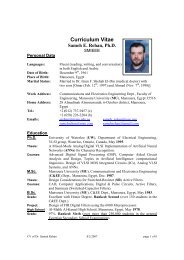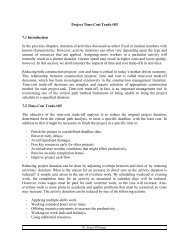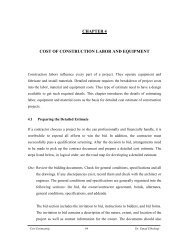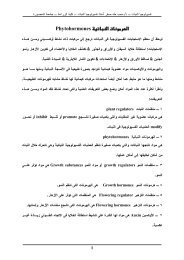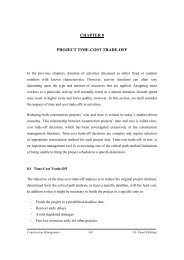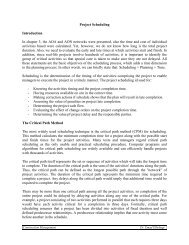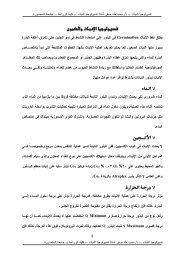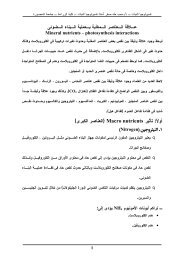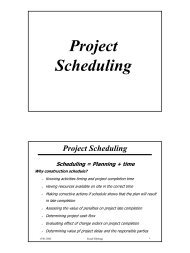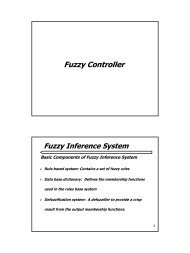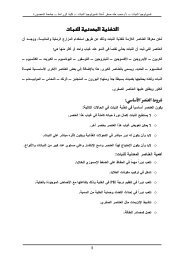Mathematical modeling
Mathematical modeling
Mathematical modeling
Create successful ePaper yourself
Turn your PDF publications into a flip-book with our unique Google optimized e-Paper software.
Model formulationFirst we have to decide on decision variables. Let us label the two materials (CON andMORT) 1, and 2, and let x 1 represents the number of tons of CON produced each weekand x 2 represents the number of tons of MORT produced each week. Our objective is tomaximize the profit of these materials, which can be written as:Max total weekly profit, Z = 140x 1 + 160x 2We have constraints for the red clay material, the blending time, and for the curing vatcapacity. This gives the following formulation:Subject to: 2x 1 + 4x 2 ≤ 285x 1 + 5x 2 ≤ 50x 1 ≤ 8x 2 ≤ 6x 1 , x 2 ≥ 02.5.1 Problems Having Unique OptimaThe above illustrative example is solved graphically by plotting the feasible region in thedecision space as shown in Fig. 2.17 and then plotting the objective function on the samegraph. Then, shifting the objective function line in the direction of improvement until itlast intersected the feasible region (Fig. 2.17). In this case, the intersection between thefeasible region and the set points satisfying the equation: 1480 = 140x 1 + 160x 2 , whichconsisted of a single point x 1 = 6 and x 2 = 4. This point is the only point on this line thatsatisfies all constraint equations simultaneously. Consequently, the optimal solution tothe linear program is unique one; the problem is said to have unique optimal solution.2.5.2 Problems Having Alternate OptimaAs shown above, the slope of the objective function is determined by the coefficients thatmultiply the decision variables. For example, if the coefficient of x 2 in the originalobjective functions is decreased to the coefficient of x 1 . The slope of the objectiveSystems Analysis 29 Dr. Emad Elbeltagi




